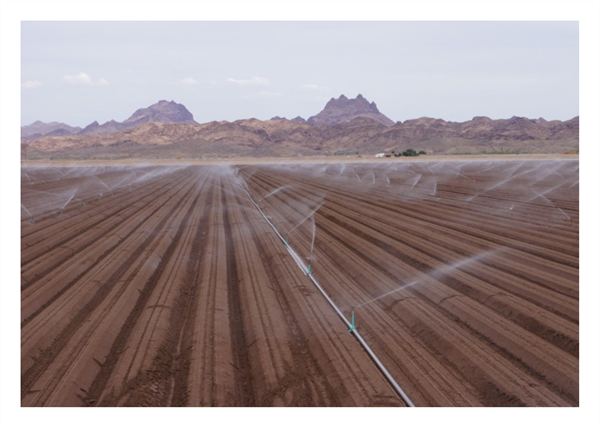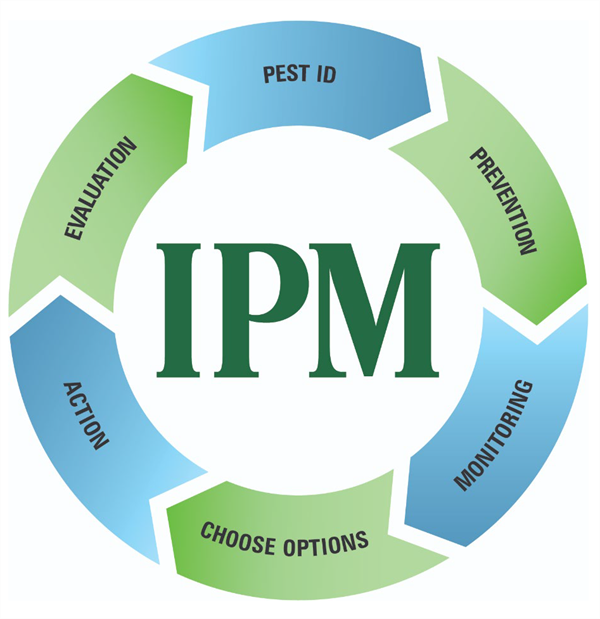Sep 3, 2025
Salinity and Sodicity – Fundamental Points
Soils with excess soluble salts, saline soils, and/or excess sodium Na+ concentrations (sodic) are a natural feature of desert soils and common in arid land agriculture. This is primarily due to an accumulation of soluble salts near the soil surface as water evaporates from and the process is driven largely by the intense evaporative demand from the arid desert environment.
A saline soil is a problem in crop production systems because of the sensitivity of crop plants to salinity, although plants vary in their degree of sensitivity. The period of greatest plant sensitivity to salinity is in the early stages of development, during germination and stand establishment.
A sodic soil is a problem in crop production systems because of the adverse effects of excess sodium on soil structure, causing a dispersion of soil particles and the breakdown of soil aggregates. This leads to poor water infiltration and percolation in the soil profile.
The development of saline and sodic conditions does not happen rapidly; the symptoms are commonly slow and hard to see in their development, until they are a problem. Thus, two things are important for field management: 1) regular soil samples and 2) field observations of crop and soil conditions.
Some fundamental points regarding the management of saline and/or sodic soils are outlined in the following section.
1. A saline soil by definition has an electrical conductivity of the soil solution (extract, ECe) of ECc ≥ 4 dS/m. Functionally and practically, saline soils have sufficient soluble salts to interfere with and diminish plant growth and development.
a. Soil salinity is a relative term or condition based on the critical salt sensitivity levels of the crop plant in question.
b. Plants vary tremendously in their degree of salt tolerance.
c. Reclamation and management of soil salinity requires an understanding of the specific level of sensitivity of the target plant to salinity.
d. Saline soils commonly have good soil aggregation and structure.
e. Reclamation of saline soils requires sufficient water to accomplish leaching and the removal of soluble salts. Thus, good internal soil drainage is important.
2. Sodic soils have a high level of exchangeable sodium (Na+) on the soil cation exchange complex (CEC). Sodic soils by definition have an Exchangeable Sodium Percentage, ESP > 15 of the soil CEC, or a sodium adsorption ratio, SAR > 13 from the soil extract (calculated).
- Sodic soils commonly have poor soil structure and aggregation due to the dispersed condition of soil particles caused by high concentrations of Na on the CEC.
- In practice, finer textured soils, e.g. clay, clay loam, silty clay loam, etc. with high clay content can develop sufficient dispersion and poor soil structure at ESP or SAR levels ~ 6-10. The ESP and SAR designations are general guidelines and not absolute.
Sodic soil reclamation does require an amendment that will facilitate the chemical exchange of Na+, usually from a calcium (Ca2+) source, such as gypsum (CaSO4).
3. Reclamation for saline soil requires additional irrigation water for leaching. Chemical amendments are not necessary for soluble salt removal.
An effective and straightforward method of calculating a leaching requirement (LR) can be calculated with the following equation that was presented by the USDA Salinity Laboratory (Ayers and Westcot, 1989).
Leaching Requirement (LR) Calculation:

Where:
ECw= salinity of the irrigation water, electrical conductivity (dS/m)
ECe= critical plant salinity tolerance, electrical conductivity (dS/m)
4. Saline soils do NOT need amendments for reclamation or management. Only leaching is needed.
5. Sodic soil reclamation involves a two-step process:
1) Exchange of Na with Ca and
2) leaching of soluble Na+ from the crop root zone.
6. Adequate soil leaching is required in both cases of saline and sodic soils.
a. In the case of sodic soil reclamation, the leaching needs to occur after appropriate amendment applications for Na+exchange with a suitable cation such as Ca2+.
7. Adequate drainage is necessary to accomplish sufficient leaching of solutes through the soil profile and below the root zone in the reclamation of both saline and sodic soils.
8. Irrigation systems capable of delivering sufficient water for leaching are necessary.
- Level basin flood irrigation best serves salinity leaching requirements.
- Sufficient salinity leaching can be accomplished with furrow flood or overhead sprinkler irrigation.
- Drip irrigation systems much be designed to provide sufficient volumes of water to accomplish adequate soil leaching.
— Drip irrigation systems are commonly very limited in this respect.
9. Crop rotation systems are important in leaching and salinity management.
- For example: Crops planted on the flat and irrigated by level basin irrigation serves to facilitate good salinity leaching in a field.
- — Examples: wheat, alfalfa, sudangrass, etc.
10. Good field observations of crop growth and development in conjunction with regular soil and water sample analysis are key elements to the management of salinity and sodicity in agricultural fields.
For example, young plants in the germination and seedling stages of development are most susceptible to salinity and water stress. Abnormal amounts of seedling damage and/or difficulties in germination can often be early signs of increasing soil salinity.
Also, early signs of increasing salinity are often observed with plants demonstrating water stress with plant-available water levels in the soil that should seemingly be adequate for maintaining non-stressed plants.
Thus, fields that are showing signs of water stress and require irrigation in shorter intervals than usual can possibly be an early sign of increasing salinity and it is good to follow-up with a good set of soil samples and a sample of the irrigation water to check.
Early identification of problems in the field with increasing Na concentrations are commonly noticed with increasing tendencies of the soils in the field to form surface crusts very easily, which reduces water infiltration into the soil surface. This is often recognized at the time planting and stand establishment with germination problems resulting from increasing degrees of soil crusting.
11. As demonstrated by the LR calculation in point 3, water quality is an important factor in the management of soil salinity. The soil chemical environment will develop an equilibrium condition in relation to irrigation water quality (salinity content) and field management. The soil solution will have a definite chemical signature from the irrigation water being applied.
12. Soil drainage is an important factor in the management of soil salinity and sodicity. Good drainage is essential for the leaching and removal of soluble salts and the leaching and removal of excess sodium in the case of a sodic soil.
 To contact John Palumbo go to: jpalumbo@ag.Arizona.edu
To contact John Palumbo go to: jpalumbo@ag.Arizona.edu







